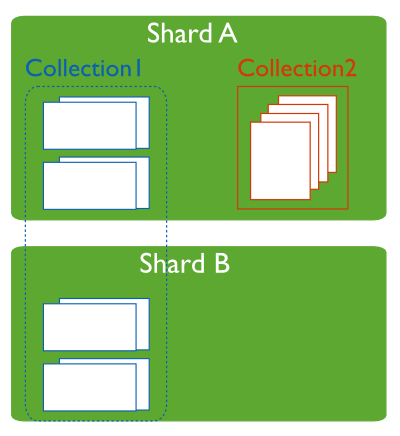- Sharding >
- Sharding Concepts >
- Sharded Cluster Components >
- Shards
Shards¶
On this page
A shard is a replica set or a single mongod that contains a subset of the data for the sharded cluster. Together, the cluster’s shards hold the entire data set for the cluster.
Typically each shard is a replica set. The replica set provides redundancy and high availability for the data in each shard.
Important
MongoDB shards data on a per collection basis. You must access all data in a sharded cluster via the mongos instances. If you connect directly to a shard, you will see only its fraction of the cluster’s data. There is no particular order to the data set on a specific shard. MongoDB does not guarantee that any two contiguous chunks will reside on a single shard.
Primary Shard¶
Every database has a “primary” [1] shard that holds all the un-sharded collections in that database.

To change the primary shard for a database, use the movePrimary command. The process of migrating the primary shard may take significant time to complete, and you should not access the collections until it completes.
When you deploy a new sharded cluster with shards that were previously used as replica sets, all existing databases continue to reside on their original shard. Databases created subsequently may reside on any shard in the cluster.
| [1] | The term “primary” shard has nothing to do with the term primary in the context of replica sets. |
Shard Status¶
Use the sh.status() method in the mongo shell to see an overview of the cluster. This reports includes which shard is primary for the database and the chunk distribution across the shards. See sh.status() method for more details.
Thank you for your feedback!
We're sorry! You can Report a Problem to help us improve this page.
